Wolves have always captivated our imagination with their wild beauty and mysterious ways. But did you know that some dog breeds bear a striking resemblance to these majestic animals? It’s true!
From their piercing gaze to the luxurious fur that mimics the wilderness itself, these dog breeds are the closest you can get to having a wolf in your home, without the challenges of taming a wild beast. Whether you’re drawn to their aesthetic or the allure of their wolf-like traits, you’re in for a treat as we explore 9 dogs that look just like wolves.
1. Siberian Husky
Diving deeper into the fascinating world of dog breeds that mirror the wild allure of wolves, I can’t help but shine the spotlight on the Siberian Husky. This medium-sized canine, originating from the chilly expanses of northern Asia, is as enigmatic as it is beautiful. But what particularly sets Siberian Huskies apart? Let’s delve into both their appearance and temperament to understand why they hold a special place in the hearts of dog enthusiasts.
Appearance
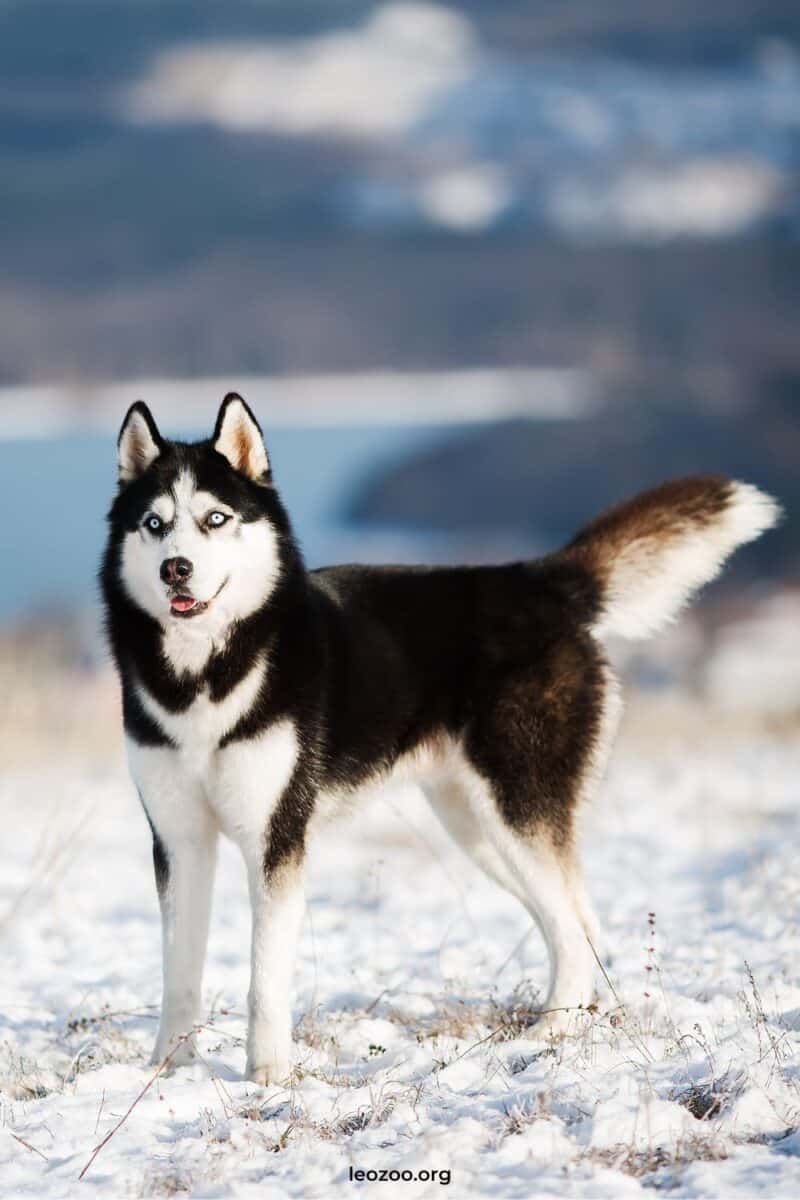
At first glance, the piercing gaze of a Siberian Husky might just stop you in your tracks. Their often multicolored eyes are a window into the soul of this breed, reflecting a spirited and resilient nature. But it’s not just their eyes that echo the wilderness; their thick coats and wolflike features make anyone do a double-take. The Husky’s coat, a dense double layer, not only is practical for withstanding frigid temperatures but also adds to their stunning wolf-like aesthetic. Whether it’s the classic black and white or the rarer sable and brown coats, each Husky carries the majestic poise of their wild ancestors.
Their resemblance to wolves isn’t accidental. Huskies have a very close genetic relationship to their wild cousins, showcasing similar physical attributes like erect triangular ears and a luxurious fur mantle that’s as stunning on a snowy backdrop as it is in the coziness of a home setting. Yet, despite their wild looks, Huskies exhibit a charm and demeanor that’s entirely their own.
Temperament
Transitioning from their captivating appearance to their temperament, the Siberian Husky presents an interesting paradox. Known for their friendly and sociable nature, Huskies defy the lone wolf stereotype. They’re remarkably amiable, getting along brilliantly with humans and other dogs alike. This breed’s history with the Chukchi people of Siberia lends insight into their sociable nature. Used primarily for transportation, these dogs were also cherished companions, often cuddling with the children to keep them warm.
What’s truly fascinating about Huskies is their balanced temperament. They’re neither overly aggressive nor timid. Instead, they project a confident aura that’s both reassuring and inviting. This, coupled with their intelligence and independence, makes the Husky a beloved breed for those seeking an adventurous yet loving canine partner. However, it’s essential to remember that their independent streak and boundless energy require consistent engagement and exercise to keep them happy and well-adjusted.
Siberian Huskies embody the spirit of the wilderness with their appearance and temperament, making them a standout choice for anyone looking to share their home with a living reminder of the beauty and mystique of the natural world.
2. Alaskan Malamute
When exploring dog breeds that bear a striking resemblance to wolves, I can’t help but devote an entire section to the magnificent Alaskan Malamute. Known for their strength, endurance, and dignified appearance, these dogs are nothing short of majestic.
Appearance
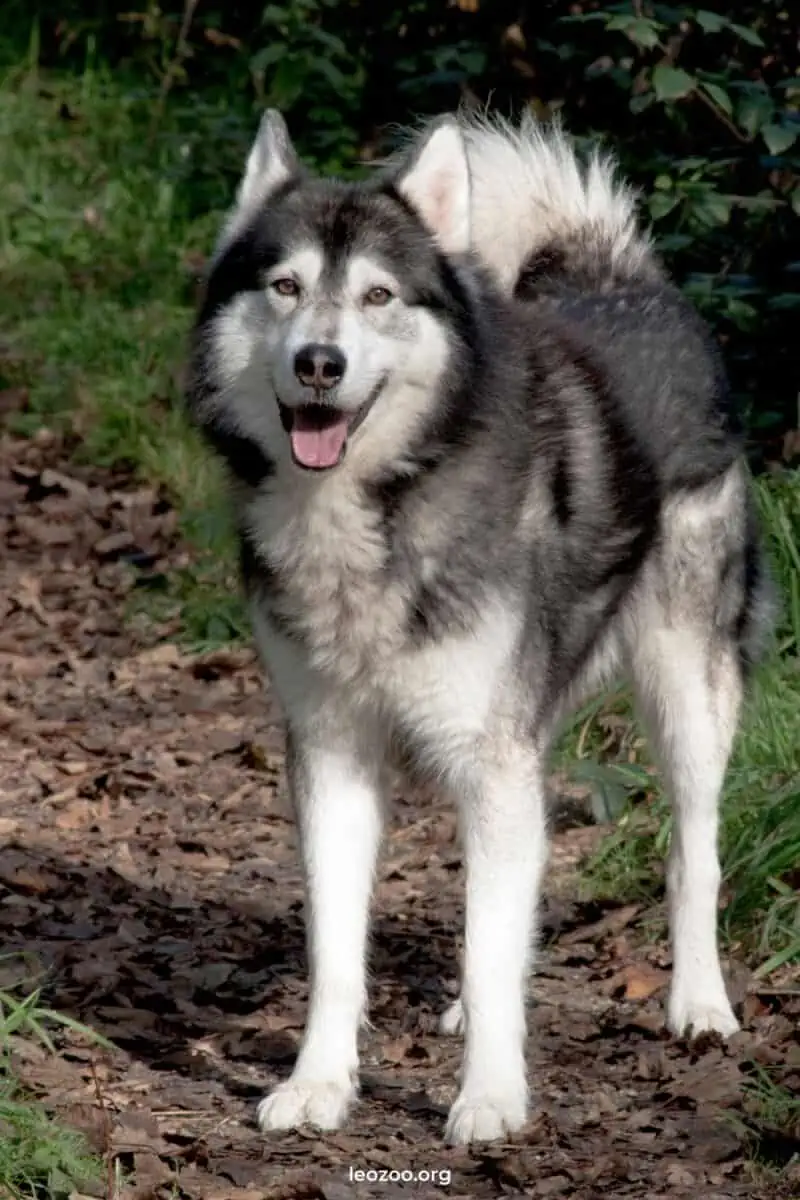
I’ve always been fascinated by the physical attributes of the Alaskan Malamute. They are larger and fluffier than their Siberian Husky counterparts, setting them apart with an imposing presence. Standing up to 25 inches tall and weighing as much as 85 pounds, they boast a broad chest and strong shoulders. But it’s their dense coat that truly gives them a wolf-like appearance. This thick fur, designed to withstand Arctic temperatures, sheds considerably, which might be a factor to consider if you’re thinking about inviting a Malamute into your home. Despite this, their unparalleled beauty and the way they carry themselves with a blend of grace and power make them a sight to behold.
Temperament
Diving deeper into what makes Alaskan Malamutes such remarkable companions, their temperament is a facet of their personality I find truly admirable. Known for being affectionate, loyal, and dignified, Alaskan Malamutes possess a loving nature that endears them to anyone lucky enough to own one. They may be grand in size but they are incredibly gentle, especially well-trained ones, making them fantastic family pets. Furthermore, like wolves, they have a natural preference for companionship – thriving in the company of humans or other dogs. Their sociability, however, doesn’t detract from their independent streak, likely inherited from their wolf ancestors. This blend of traits makes them not only a loyal friend but also a fascinating breed to engage with. Despite their size and strength, it’s important to remember that they require a firm, patient hand in training. Their stubbornness can be a challenge, but it’s also a testament to their intelligence and spirited nature.
3. German Shepherd
When exploring dog breeds that bear a striking resemblance to wolves, the German Shepherd inevitably makes the list. This breed not only captivates with its majestic appearance but also with its versatile capabilities. It’s a fascinating journey to delve into their wolf-like traits, particularly focusing on their appearance and temperament.
Appearance

The German Shepherd’s physical characteristics are a nod to their wild ancestors. They boast a muscular build that’s both agile and strong, embodying the essence of resilience and power. One can’t help but notice their double coat, which is dense and protects them against harsh weather, a trait undoubtedly shared with wolves. Their coat colors range widely, from the classic black and tan to the rarer all-black, offering a variety that caters to different preferences.
But it’s not just their coat that draws the wolf comparison. Their prominent, perky ears stand tall, catching every sound with precision—an attribute that enhances their alert and watchful nature. This feature, combined with their intelligent and keen gaze, gives them a look of perpetual vigilance and cunning, mirroring the focused demeanor of a wolf.
Temperament
Diving into the German Shepherd’s temperament reveals a complex and multifaceted personality. At their core, they are loyal and protective, embodying a deep sense of duty towards their family. This breed’s versatility shines through its ability to adapt to various roles, from a loving family pet to a diligent working dog serving in police or military capacities.
However, their wolf-like ancestry plays a role in their temperament as well. German Shepherds possess a strong, confident character, paired with an innate intelligence that makes them exceptionally trainable. Yet, it’s this same intelligence that requires them to have a purpose or job—without it, they can become bored and potentially problematic.
Their protective nature is a double-edged sword; while it makes them excellent guardians, it also means they require proper socialization from a young age. Without it, their protective instinct can become overzealous. Training them is not just about obedience; it’s about channeling their energy and intelligence into positive outlets, reinforcing the bond between pet and owner.
As with any breed, the key to unlocking the best in a German Shepherd lies in understanding and respecting their heritage. Their wolf-like traits of loyalty, intelligence, and protectiveness make them not just pets, but companions for those willing to invest the time and love they deserve.
4. Czechoslovakian Wolfdog
As someone who’s spent years delving into the world of dog breeds, I find the Czechoslovakian Wolfdog, or the Czechoslovakian Vlcak, particularly fascinating. Born from an ambitious project to merge the genes of German Shepherds with Carpathian wolves, this breed embodies the sheer essence of what it means to resemble a wolf both in appearance and spirit.
Appearance
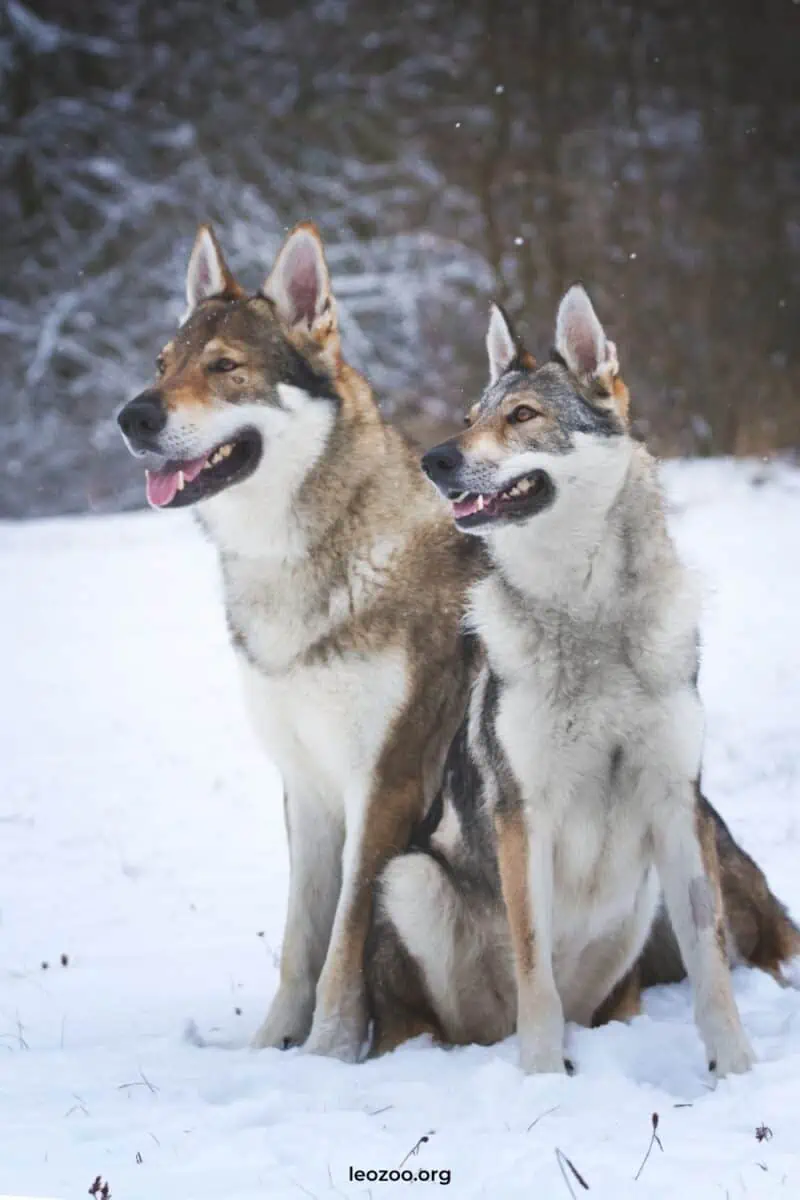
I can’t help but be in awe of the Czechoslovakian Wolfdog’s magnificent appearance. These dogs sport a robust frame cloaked in a dense, weather-resistant coat that elegantly mirrors their wolf ancestors. Standing at about 24 inches and weighing close to 50 pounds, their physical prowess is undeniable. Their muscular build and amber eyes, a direct inheritance from their wild lineage, give them a gaze that’s both intense and intelligent. The resemblance to wolves doesn’t end there; their fur, often a blend of gray and silver hues, helps them blend seamlessly into natural landscapes, echoing the stealth and beauty of their wild counterparts.
Temperament
Digging deeper into their personality, I’ve discovered that Czechoslovakian Wolfdogs are as complex as they are captivating. Loyal to their core, these dogs form strong bonds with their human families. Their intelligence is remarkable, a trait that makes them both a joy and a challenge to train. Given their high-energy levels and sharp minds, they thrive on mental and physical stimulation. Without it, they can easily succumb to boredom, leading them to invent their own “jobs” – not always to their owner’s delight.
Their ancestry has blessed them with a strong work drive, making them stellar at tasks that challenge both their mind and body. However, this heritage also means they possess an independent nature, often making decisions without waiting for human commands. This independence, while admirable, underscores the need for experienced owners who can offer guidance and structure. Socialization, too, plays a crucial role in their development. Starting from an early age, it helps temper their protective instincts, ensuring they grow into well-adjusted adults capable of distinguishing between friend and foe.
In exploring their temperament, it’s clear that Czechoslovakian Wolfdogs are not just any ordinary dog breed. They’re a testament to the wild beauty and complexity of nature, embodying the spirit of the wolf while walking in the world of humans. Their unique blend of traits requires a commitment to understand and respect their needs, guaranteeing a rewarding partnership like no other.
5. Shiba Inu
When exploring dog breeds that closely resemble wolves, one can’t miss mentioning the Shiba Inu. This breed may not exactly mirror the majesty of a wolf in size or demeanor, but its connection to its wild ancestors is undeniably deep and fascinating.
Appearance
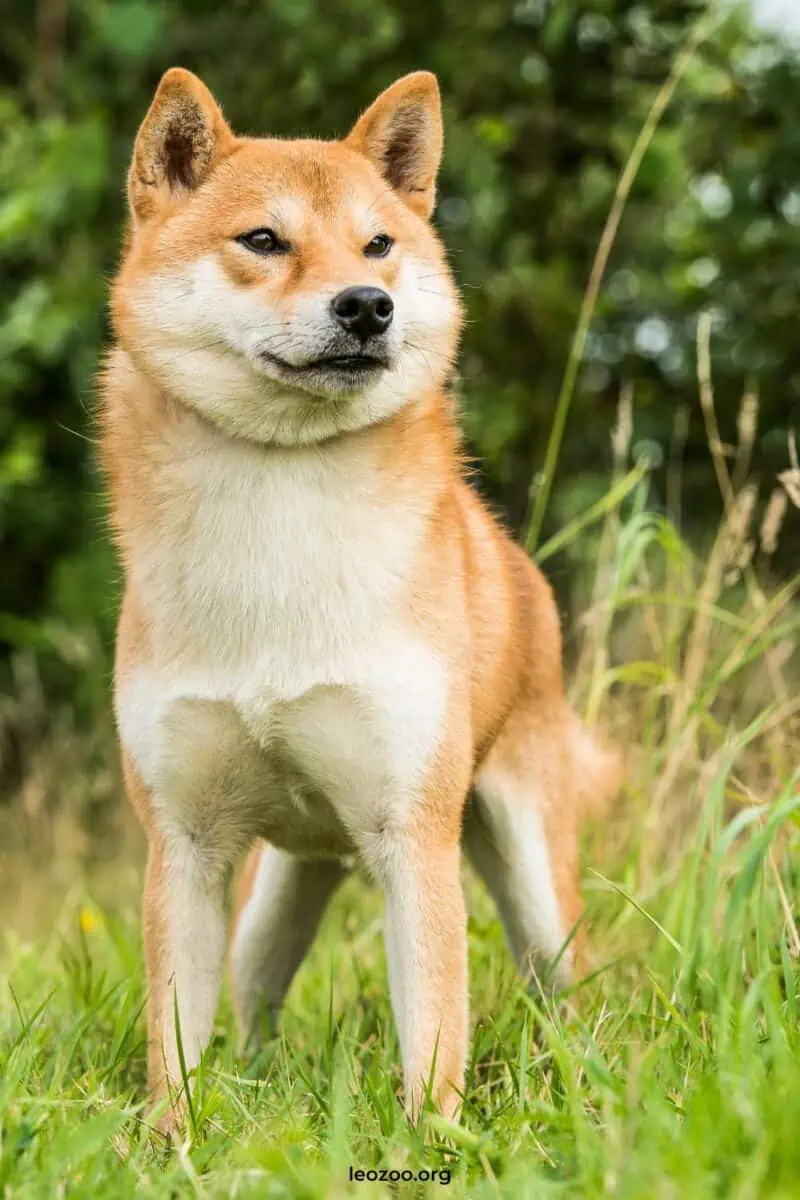
The Shiba Inu, with its fox-like appearance, contrasts yet complements the rugged wolfish look we often imagine. Yet, it’s this very resemblance to the wild that captivates many. Sporting a dense coat that ranges from red to black and tan, their fur helps them endure both warm and cold seasons effortlessly. Shiba Inus possess striking facial features with sharp, alert eyes that command attention. Their compact, muscular build allows for agility and speed, reminiscent of their wolf ancestors prowling through the wilderness. Perhaps one of the most distinctive features is their curled tail, which not only adds to their unique silhouette but also has practical origins for survival in the outdoor elements.
Temperament
Shiba Inus are known for their spirited personality and independent nature. Unlike the pack-oriented wolves, Shiba Inus tend to have a more solitary disposition. However, they share the intelligence and alertness of their wild counterparts. They’re fiercely loyal to their families and can be reserved, even aloof, with strangers, showcasing a discerning temperament not found in all dog breeds. Their high prey drive is a direct nod to their ancestral roots, requiring owners to be mindful of their tendency to chase. Shiba Inus are also remarkably clean, often grooming themselves much like cats do, which further sets them apart from other breeds.
Training a Shiba Inu can be both a challenge and a reward, given their independent streak. They respond best to positive reinforcement and require a patient, consistent hand to guide them. Early socialization is key to tempering their natural wariness around strangers and ensuring they grow into well-adjusted adults. Despite these challenges, the bond formed with a Shiba Inu is strong, rooted in mutual respect and understanding, mirroring the profound connection shared between early humans and their wolf companions.
6. Utonagan
As I delve deeper into the fascinating world of dog breeds that bear a striking resemblance to wolves, I can’t help but spotlight the Utonagan. This breed has captured the hearts of many with its wild appearance and approachable demeanor. Let’s explore what makes the Utonagan so special.
Appearance
At first glance, you might actually mistake a Utonagan for a wolf, given its large size and intimidating posture. They possess a thick double coat that beautifully mimics the wild, ranging in colors that often blend with their natural surroundings. Their eye-catching fur can display shades of black, gray, and white, mimicking the diverse palette seen in wild wolves. Physical traits such as their broad shoulders and sturdy build not only contribute to their wolf-like aesthetic but also hint at their strength and agility.
Their eyes, often of a piercing blue or warm amber, radiate intelligence and curiosity about the world around them. One of their most remarkable features is the bushy tail, which they carry with pride, further accentuating their wolfish heritage. I’ve noticed their facial expressions seem to convey a wide range of emotions, from playful curiosity to serene wisdom, making them one of the most visually captivating of the wolf-like dog breeds.
Temperament
Despite their fierce appearance, Utonagans are well-known for their friendly and sociable nature. They thrive on human interaction and form incredibly strong bonds with their families. It’s their outgoing personality that makes them exceptional companions, especially for those who lead an active lifestyle. Utonagans have a well of energy, and they love nothing more than to be engaged in outdoor activities. Whether it’s a long hike through the woods or a playful game in the yard, they’re always up for an adventure.
I’ve found Utonagans to be highly trainable, responding well to positive reinforcement methods. This intelligence, paired with their desire to please, makes them relatively easy to train compared to other wolf-like breeds. However, it’s essential to remember that they need mental stimulation just as much as physical. Puzzle toys and advanced training routines can help keep their minds sharp and prevent boredom.
Their friendly demeanor extends beyond just their human family. Utonagans generally get along well with other dogs and pets, though they do have a strong prey drive. Early socialization is key to helping them learn to manage these instincts and behave appropriately around unfamiliar animals and people.
In essence, the Utonagan is more than just a beautiful breed; it’s a loyal friend and a dedicated family member. Their kind nature and intelligent minds make them a joy to be around, and their striking appearance never fails to turn heads wherever they go.
7. Saarloos Wolfdog
When I’m exploring unique dog breeds that resemble wolves, the Saarloos Wolfdog inevitably captures my attention. This breed’s remarkable wolf-like appearance makes it stand out from other dogs and showcases the close connection between domestic dogs and their wild ancestors.
Appearance
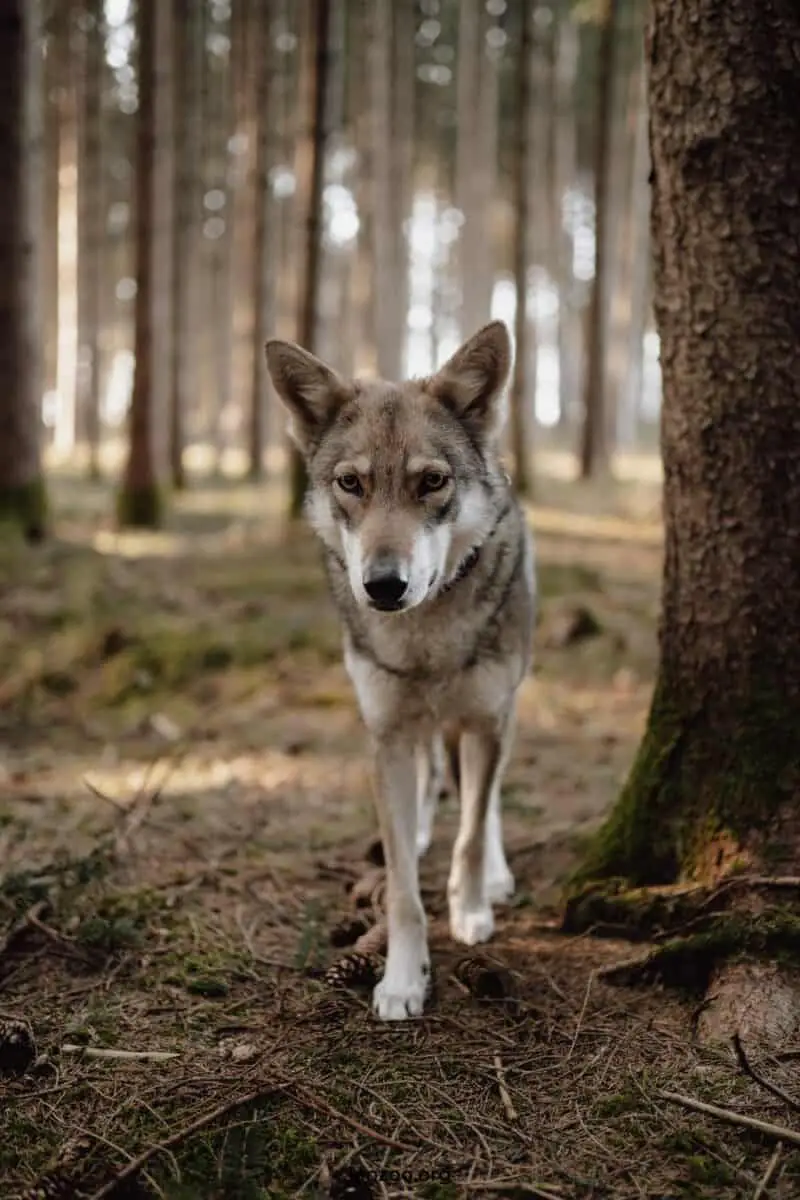
The Saarloos Wolfdog is a stunning example of nature’s artistry. At first glance, you might mistake one for a wolf due to its large size, pointed ears, and the unmistakable wild look in its eyes. The breed has a robust physique that’s both athletic and graceful, a testament to its wolf and German Shepherd heritage. Its fur coat, which can come in a variety of shades, further accentuates its wild appearance. The coat is dense and thick, providing not just a visual similarity to wolves but also protection against the elements. Its striking physical presence is complemented by an intelligent and alert expression, making it a head-turner in any setting.
Temperament
Despite their intimidating looks, Saarloos Wolfdogs possess a temperament that’s a complex blend of the wild and the domesticated. This breed is known for its strong social instincts, echoing the pack mentality of wolves. They form deep, enduring bonds with their families, showcasing loyalty and affection. However, they retain a degree of independence and aloofness that’s characteristic of wild animals. Early socialization and positive reinforcement are crucial for this breed, as they can be shy or reserved around strangers. The Saarloos Wolfdog thrives in an environment that respects its need for both companionship and space, offering challenges that engage its body and mind. Their intelligence and adaptability make them responsive to training, although their independent streak requires patience and understanding from their owners.
8. Tamaskan
When diving into the fascinating world of dog breeds that mirror the majestic appearance of wolves, the Tamaskan undoubtedly earns its spot. I’ve always been captivated by the allure of wolf-like dogs, and the Tamaskan is one that consistently piques my interest. This breed showcases not just the wild beauty of wolves but also demonstrates a versatility and temperament that make it an intriguing choice for dog lovers.
Appearance

At first glance, the Tamaskan might just make you do a double-take – it’s that similar to a wolf. With a coat palette ranging from red-grey, wolf-grey, to black-grey, these dogs carry the wild, rugged looks of their lupine counterparts. Their thick fur further emphasizes their wolfish aesthetic, rendering them almost indistinguishable from the real deal in certain settings.
What sets the Tamaskan apart in the realm of dog breeds is its rarity. There are only about 600 certified Tamaskans worldwide. I find this fact not only fascinating but also a testament to the breed’s exclusivity. Originating in 2006 with the blending of Utonagan and Finnish sled dogs, the Tamaskan’s considerations for new bloodlines keep its genetic pool vibrant and healthy.
Temperament
Despite what their wild looks might suggest, Tamaskans break the mold when it comes to their personality. They’re good family dogs, known for being exceptionally intelligent and trainable. This intelligence, coupled with their high energy levels, means they thrive on physical and mental stimulation. Leave them idle, and you might find yourself dealing with a bored and potentially destructive companion.
Yet, it’s not just their smarts or their need for engagement that catches my attention; it’s their adaptability and kindness towards children. Tamaskans have a knack for integrating into the family dynamic, making them wonderful companions. But, it’s crucial to remember that like all high-energy dog breeds, Tamaskans require adequate space to explore and play. They’re not suited for confined living spaces or being left alone for long periods.
In training them, positive reinforcement and early socialization are key. They respond well to a firm yet gentle hand, eager to please but also possessing a streak of independence. This balance between wild looks and a warm temperament makes the Tamaskan a fascinating breed to consider for those who dream of having a wolf-like companion without the associated wildness.
9. Canadian Eskimo Dog
When we delve into dog breeds echoing the majestic aura of wolves, the Canadian Eskimo Dog stands out. It’s not just their appearance that captivates; their history and temperament weave a story of resilience and versatility. Let’s explore what makes this breed an epitome of a wolf-like companion.
Appearance
The Canadian Eskimo Dog, or “Qimmiq” as it’s known traditionally, boasts an aesthetic that’s unmistakably wolf-like. With a robust build that’s suited for the harsh Arctic environment, this breed is a testament to nature’s design for endurance and strength. Their coat, thick and dense, offers an array of colors ranging from white and silver to black and grey, mirroring the diverse hues found within wolf packs.
But it’s not just their coat that draws the parallel. Their large triangular ears stand alert, and their dark, almond-shaped eyes reflect an intelligence and intensity that’s hard to miss. It’s this combination of features that not only contributes to their striking appearance but also aligns them so closely with the wolves they resemble.
Temperament
Despite their imposing look, Canadian Eskimo Dogs carry a temperament that’s as adaptable as it is adventurous. Known for their incredible work ethic, these dogs thrive in environments where they can put their energy to good use. Historically bred as sled dogs, their stamina and drive are unparalleled, a trait that resonates with the wolf’s way of life.
But let’s not mistake their hardiness for a lack of affection. Canadian Eskimo Dogs are deeply loyal, forming strong bonds with their families. Their social nature means they flourish in environments where they can interact and be part of the pack. It’s important to note, however, that their bold spirit requires early socialization and training to channel their energy positively.
Their intelligence and eagerness to learn make them highly trainable, but their independent streak calls for a patient and consistent hand. Like their ancestors, they seek leaders who command respect through understanding and mutual trust, not intimidation.
In my experience, embracing their need for activity and companionship reveals the true heart of a Canadian Eskimo Dog – one that’s filled with devotion, joy, and an endless desire to explore. It’s this unique blend of traits that not only cements their status as remarkable companions but also as living links to the untamed beauty of the natural world.
